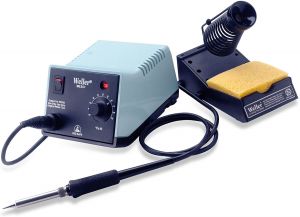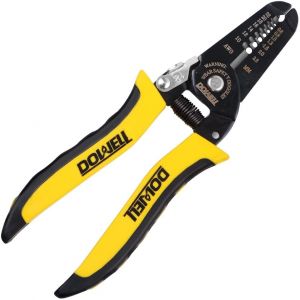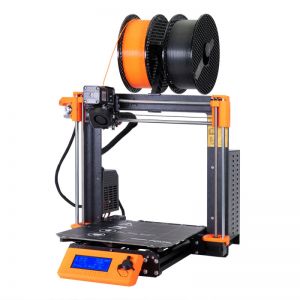Tools For Beginners
Builders with years of experience often find themselves in need of a new tool or device to build or run their robot, but there are a few things that all builders, even people using robot kits, will need. If you don't already have some of these tools you should strongly consider getting them.
Soldering Station
You'll have to learn how to attach wires to motors, connectors, circuit boards, and to each other using solder in order to get a solid, reliable connection that will withstand the impacts, shock and vibration typical in combat. There are a lot of beginners guides to help you with the basics. There are a lot of inexpensive and poor quality soldering tools out there; they will hinder you from becoming proficient at good electrical connections. Consider getting a quality tool from a major manufacturer like Weller or Hakko. If you're making small bots, get a small conical tip for the iron. There are a lot of online guides comparing soldering stations that may help you find the best one for you.
The heat from soldering can damage components, especially if applied for too long. One way to avoid this is to use leaded 60/40 (60% tin, 40% lead) rosin core solder. Some places will advocate for using lead-free solder but it's melting point is much higher and is much more difficult to use. Another thing to consider getting is a pair of Helping Hands. Typically you will need to hold onto three or four pieces (wire, motor, solder, iron) to solder and this can be difficult with two hands. Helping Hands will hold the pieces you are soldering together for you so you can concentrate on just getting a good solder joint.
Wire Cutters - Strippers
While you could get by with a pair of scissors to cut wires and a sharp knife to strip off insulation, it can be difficult to strip the insulation without damaging the underlying wire. A proper wire stripper will make this job easier. A pliers-style wire stripper (as shown) is quick and convenient; choose one that can handle the sizes of wire you are using.
Squeeze-action 'automatic' wire strippers tend to work better for larger wires. These have a tension adjustment, and they will nick or break wires if the tension is set too high.
Drivers / Wrenches
Nearly all bots use some fasteners to hold things together. Hex key or Allen key fasteners are the most popular since the fastener heads aren't as susceptible to damage as Phillips head fasteners. These come in many different styles and lengths for different uses. If your bot design requires you to remove a lot of fasteners to access the internals, consider getting a set that can attach to an electric drill or screwdriver.
Drills
Electric drills are needed to make holes, to prepare material to be tapped (threaded for fasteners), and can also be used to quickly take your bot apart and put it together while making repairs and changes during an event. The quality and price of drills cover a huge range. Cheap drills are fine if you are only drilling aluminum or plastic, but they don't tend to last as long. If you are going to be drilling into steel or titanium you should get a higher quality drill from a brand name company. Consider getting a spare battery so that you won't run out of power during an event. While drills can be used to insert or remove fasteners from your bot, a large drill can be awkward to use with tiny robots; consider getting an electric screwdriver instead.
Cutting tools
Being able to cut material is important when creating and repairing your robot. There are many manual and electric cutting tools available. One that is useful for all robots of all sizes is a rotary tool or Dremel. Although rotary tools have many different blades and wheels for cutting, abrasive disks are particularly useful.
3D printer
A 3D printer, which produces plastic parts under computer control, can be a helpful tool. 3D printing is normally done as part of preparation or building, rather than during a competition, and so you might be able to borrow one or use a service in order to print your bot parts. See 3D Printing page for more details.


